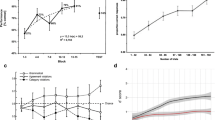Abstract
We propose a role sharing model of language areas in which Broca’s area is for categorizing symbols used to represent rules stored and retrieved in other language areas. For example, at the syntactical level, the other language areas store rules represented with terminal symbols and also rules represented with non-terminal symbols, whereas Broca area invents non-terminals and forms abstract rules at language acquisition phase and converts a terminal symbol to a non-terminal corresponding to it to get an appropriate rule at performance phase. The model role of Broca’s area is supposed to be essential but minimal to support human language faculty. Under this assumption, the emergence of Broca’s area is hypothesized to have triggered the evolution of language supposing that the other mechanisms are fully evolved. The argument is based on the recent fMRI study of KE family members and related findings on a mutation of FOXP2 gene.
Preview
Unable to display preview. Download preview PDF.
Similar content being viewed by others
References
Elman, J.L.: Finding Structure in Time. Cognitive Science 14, 179–211 (1990)
Enard, W., Przeworski, M., Fisher, S.E., Lai, C.S.L., Wiebe, V., Kitano, T., Monaco, A.P., Paabo, S.: Molecular evolution of FOXP2, a gene involved in speech and language. Nature 418, 869–872 (2002)
Gopnik, M.: Feature-blind grammar and dysphasia. Nature 344, 715 (1990)
Gopnik, M., Crago, M.B.: Familial aggregation of a developmental language disorder. Cognition 39, 1–50 (1991)
Hauser, M.D., Chomsky, N., Fitch, W.T.: The Faculty of Language: What Is It, Who Has It, and How Did It Evolve? Science 298, 1569–1579 (2002)
Hashimoto, R., Sakai, K.L.: Specialization in the left prefrontal cortex for sentence comprehension. Neuron 35, 589–597 (2002)
Jagota, A., Plate, T., Shastri, L., Sun, R. (eds.): Connectionist symbol processing: Dead or alive? Neural Computing Surveys 2, 1–40 (1999)
Lai, C.S., Fisher, S.E., Hurst, J.A., Vargha-Khadem, F., Monaco, A.P.A.: Forkhead-domain gene is mutated in a severe speech and language disorder. Nature 413, 519–523 (2001)
Lai, C.S.L., Gerrelli, D., Monaco, A.P., Fisher, S.E., Copp, A.J.: FOXP2 expression during brain development coincides with adult sites of pathology in a severe speech and language disorder. Brain 126(11), 2455–2462 (2003)
Liegeois, F., Baldeweg, T., Connelly, A., Gadian, D.G., Mishkin, M., Vargha-Khadem, F.: Language fMRI abnormalities associated with FOXP2 gene mutation. Nature Neuroscience 6(11), 1230–1237 (2003)
Vargha-Khadem, F., Watkins, K., Alcock, K., Fletcher, P., Passingham, R.: Praxic and nonverbal cognitive deficits in a large family with genetically transmitted speech and language disorder. Proceedings of the National Academy of Sciences USA 92, 930–933 (1995)
Watkins, K.E., Dronkers, N.F., Vargha-Khadem, F.: Behavioural analysis of an inherited speech and language disorder: comparison with acquired aphasia. Brain 125(3), 452–464 (2002)
Author information
Authors and Affiliations
Editor information
Rights and permissions
Copyright information
© 2007 Springer Berlin Heidelberg
About this paper
Cite this paper
Shinozawa, Y., Sakurai, A. (2007). A Role Sharing Model of Language Areas. In: Sakurai, A., Hasida, K., Nitta, K. (eds) New Frontiers in Artificial Intelligence. JSAI JSAI 2003 2004. Lecture Notes in Computer Science(), vol 3609. Springer, Berlin, Heidelberg. https://doi.org/10.1007/978-3-540-71009-7_30
Download citation
DOI: https://doi.org/10.1007/978-3-540-71009-7_30
Published:
Publisher Name: Springer, Berlin, Heidelberg
Print ISBN: 978-3-540-71008-0
Online ISBN: 978-3-540-71009-7
eBook Packages: Computer ScienceComputer Science (R0)




